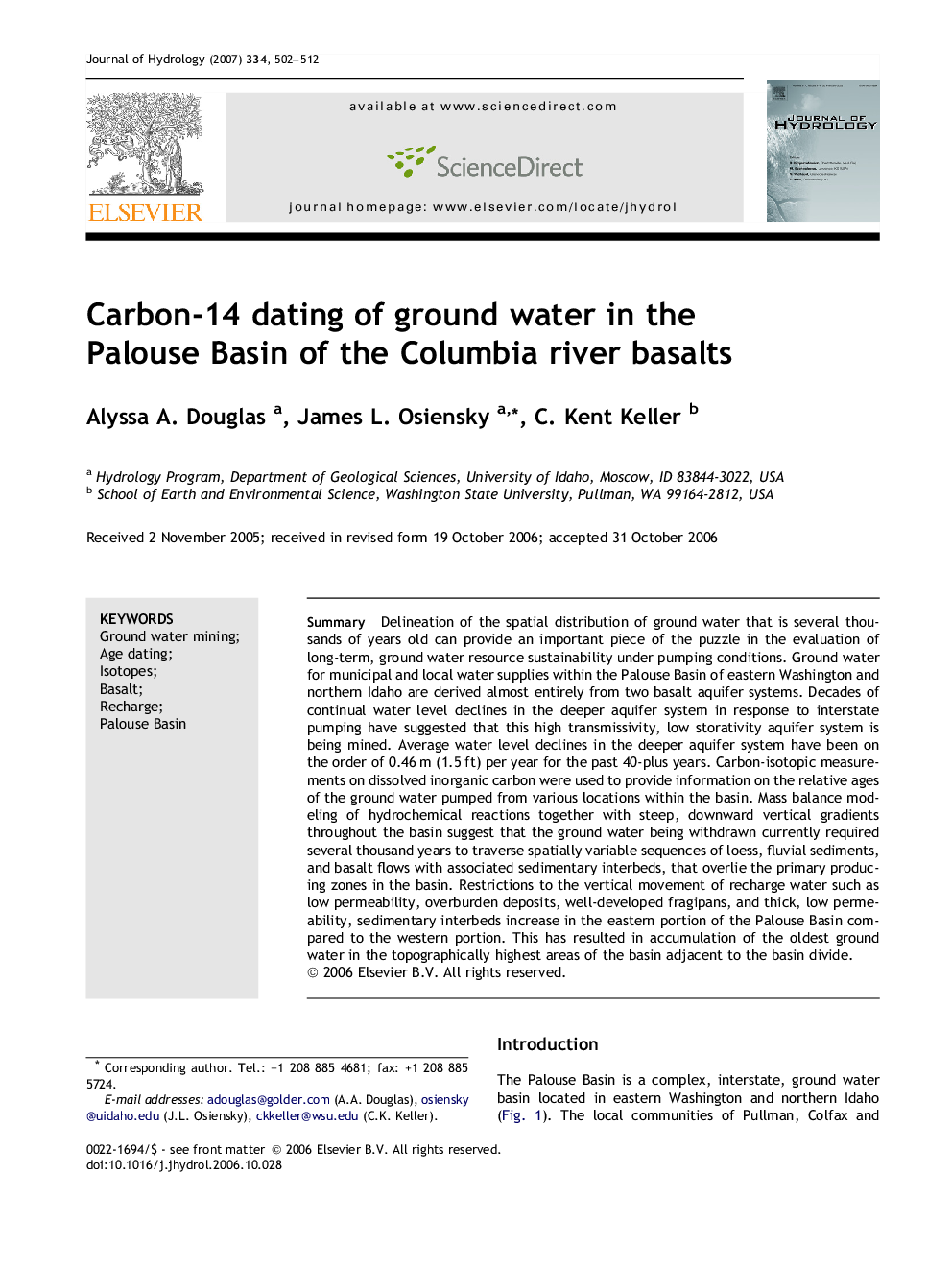| Article ID | Journal | Published Year | Pages | File Type |
|---|---|---|---|---|
| 4580089 | Journal of Hydrology | 2007 | 11 Pages |
SummaryDelineation of the spatial distribution of ground water that is several thousands of years old can provide an important piece of the puzzle in the evaluation of long-term, ground water resource sustainability under pumping conditions. Ground water for municipal and local water supplies within the Palouse Basin of eastern Washington and northern Idaho are derived almost entirely from two basalt aquifer systems. Decades of continual water level declines in the deeper aquifer system in response to interstate pumping have suggested that this high transmissivity, low storativity aquifer system is being mined. Average water level declines in the deeper aquifer system have been on the order of 0.46 m (1.5 ft) per year for the past 40-plus years. Carbon-isotopic measurements on dissolved inorganic carbon were used to provide information on the relative ages of the ground water pumped from various locations within the basin. Mass balance modeling of hydrochemical reactions together with steep, downward vertical gradients throughout the basin suggest that the ground water being withdrawn currently required several thousand years to traverse spatially variable sequences of loess, fluvial sediments, and basalt flows with associated sedimentary interbeds, that overlie the primary producing zones in the basin. Restrictions to the vertical movement of recharge water such as low permeability, overburden deposits, well-developed fragipans, and thick, low permeability, sedimentary interbeds increase in the eastern portion of the Palouse Basin compared to the western portion. This has resulted in accumulation of the oldest ground water in the topographically highest areas of the basin adjacent to the basin divide.
